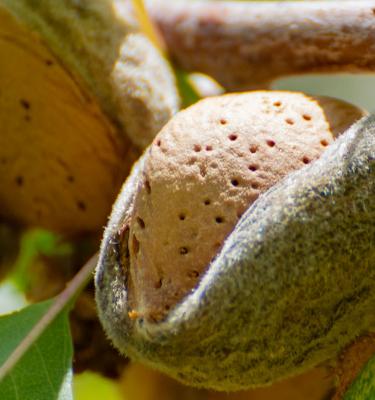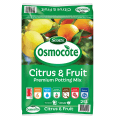

How to Grow & Care for Almond Trees
Almonds (Prunus amygdalus) are the edible nuts produced inside the hard-fleshed velvety fruit, that grows on a tree that looks very similar to a peach or nectarine. Almonds are closely related to other stone fruits like peaches and nectarines, and their trees require the same growing conditions - including cold winters and warm dry summers.
Almonds are frost tolerant, but late spring frosts can cause flowers to drop. Almond trees lose their leaves in winter when they can be easily pruned to shape. Many varieties will grow up to 5-6 metres if left unpruned, but they can be kept to 2-3 metres tall with yearly pruning. Once established (2-3 years from planting) almond trees are heavy croppers. The edible nuts (still enclosed in their outer shell) can be dried and stored or the outer shell can be removed and the nuts enjoyed fresh or roasted.
Top 5 tips for growing almond trees
- Choose a full sun position in your garden or grow a dwarf variety in a large pot.
- Look for a self-pollinating variety unless you have the space for 2 or more trees.
- Netting almond trees is essential to protect your crop from birds.
- Almonds will produce a crop 3 years after being planted.
- Harvest almonds from February to April when the fruit begins to split.
Essential shopping list for growing almond trees
- Bare-rooted or potted almond tree
- Scotts Osmocote® Compost Premium Soil Improver
- Scotts Osmocote® Controlled Release Fertiliser: All Purpose
- If growing in pots, Scotts Osmocote® Citrus & Fruit Potting Mix
- Garden spade
- Mulch
- Secateurs
- Wildlife safe crop protection netting
Prepare
Almond trees prefer a full sun spot in well-drained soil and require regular watering when flowering and fruiting. Prepare the soil for planting by digging a hole that’s twice as wide as the root ball of your tree and at the same depth. Loosen the soil at the bottom of the hole and mix Scotts Osmocote® Compost Premium Soil Improver through the original soil.
Growing almond trees in the garden
Growing almonds from bare-rooted or potted trees
Bare-rooted almond trees can be purchased and planted in winter when the tree will be dormant. Potted almonds can be planted at any time, except in the heat of summer.
Plant your almond tree at the same depth it was in the pot or if bare-rooted, make sure any graft on the truck is well above the soil surface. If needed create a mound in your prepared planting hole to sit the root ball on so it’s at the correct height.
Add a stake to support bare-rooted trees at planting - this can be removed once the roots have taken.
Firm down the soil around the roots of your newly planted almond tree and water it well. Top dress around the tree with an organic sugar cane mulch (but avoid touching the trunk) to suppress weeds and retain moisture.
Growing almond trees in pots
You can grow almond trees in large pots or containers so long as they have good drainage. An old half-wine barrel with drainage holes added is an ideal size. Fill your pot with a premium potting mix like Scotts Osmocote® Citrus & Fruit Potting Mix before planting your bare-rooted or potted almond tree.
Firm down the soil around your newly planted almond tree in the pot and water it in well to settle its roots in nicely.
Mulch the top of the soil in the pot to retain moisture and ensure the pot can be easily watered during the summer months.
Harvesting almonds
Almonds are ready to harvest when the fleshy outer part of the fruit splits and exposes the nut inside - generally around February to April depending on the variety. It’s best to harvest all the nuts at once, as autumn rain can cause the nuts to rot on the tree.
You can lay a tarp down beneath the tree and knock the fruit into it or hand pick. Either way, once harvested, remove the velvety outer fruit to expose the nuts shell. The nuts inside the shell can be enjoyed straight away or dried for storage.
You’ll need to securely net your trees to protect the crop from hungry birds and other animals. Once the baby almond fruits have formed use a wildlife safe, 4mm hole or smaller white netting that’s pulled tightly over the tree and secured around the truck or set up a frame structure over the tree so you can easily place the net over this.
.jpg)
Common almond plant pests, diseases & general care advice
Almonds require regular watering during flowering and fruit growth, if they are allowed to become heat stressed or dry out the fruit will be small or may fall off before it’s ready to harvest.
Just like its peach and nectarine relatives, almonds are susceptible to the fungal disease Peach Leaf Curl. Use a copper-based spray 2-3 times during the time when the tree leaves have dropped, with the last application just before the buds burst with flowers in late winter or early spring.
Established trees should be pruned in winter when dormant to an open vase shape and fertilised in spring and again in autumn with Scotts Osmocote® Plus Organics Citrus & Fruit Plant Food & Soil Improver



